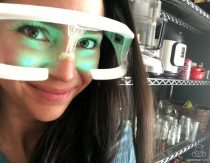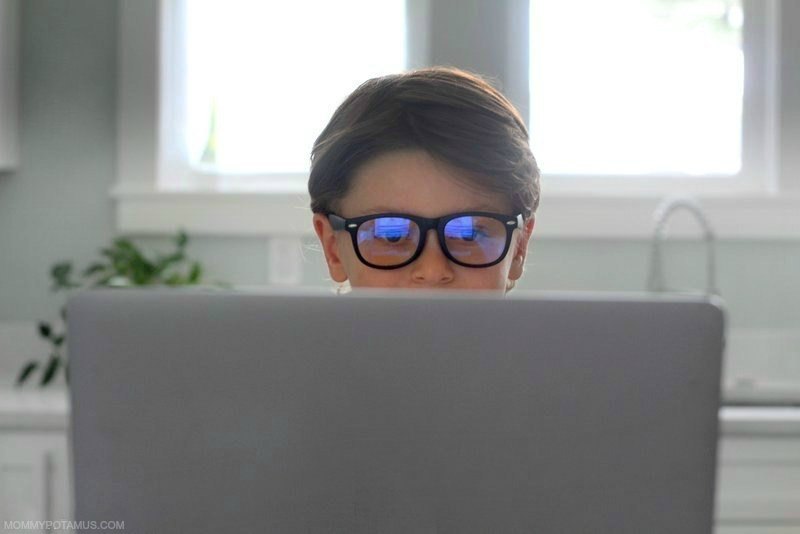
Family movie nights should not lead to cranky mornings, but they most definitely can. That’s because kids eyes are more vulnerable to the negative effect of blue light created by screens (TVs, tablets, etc.), so even a small amount can make an impact.
My whole family has been wearing blue light blocking glasses for years, but I recently needed to replace a few pairs because the frames were too small for my kids. Spending $75+ per pair is not in my budget right now, so I researched the best options based on how much blue light is filtered out, cost and durability.
You’ll find them below, but first let’s dive into why this is such an important issue. As always, I want to mention that none of these statements have been evaluated by the FDA, this article is not medical advice, and it is not meant to prevent, diagnose or treat any condition.
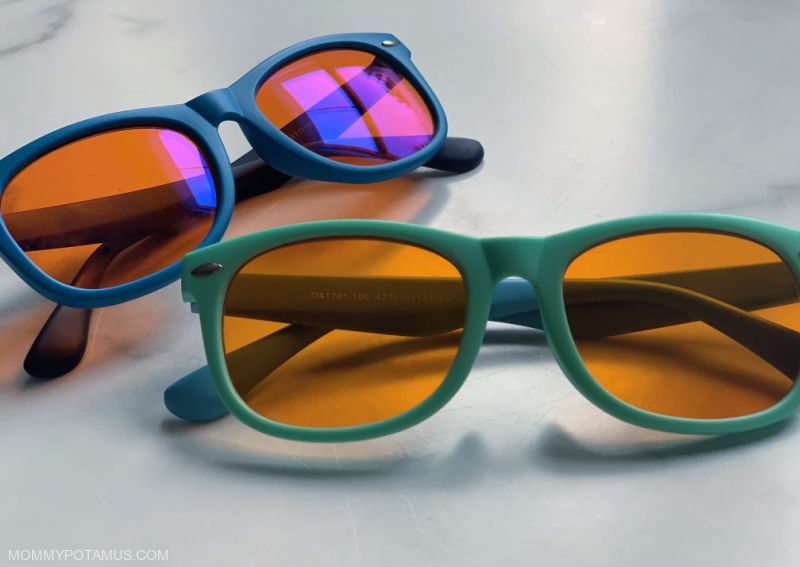
4 Things To Know Before Buying Blue Light Blocking Glasses
By now you probably know that blue light is part of the sun’s visible spectrum. It’s strongest from early morning to the afternoon, and when we absorb it via photoreceptors in our eyes it triggers “awake mode” in our bodies. That’s a good thing, which is why I recommend getting early morning sun as often as possible.
However, while the right amount of blue light at the right time is beneficial, it’s definitely possible to get too much of a good thing. Unlike red light which has long, slow-wavelength, blue light contains short and intense high-energy-visible (HEV) wavelengths. It’s a powerful form of visible light that has a profound impact on how we function physiologically.
Unfortunately, most of us are exposed to excessive blue light from artificial sources like digital screens, LED lights, and fluorescent lights . . . and exposure is increasing exponentially. With that in mind, here are five things to keep in mind when considering blue light blocking glasses.
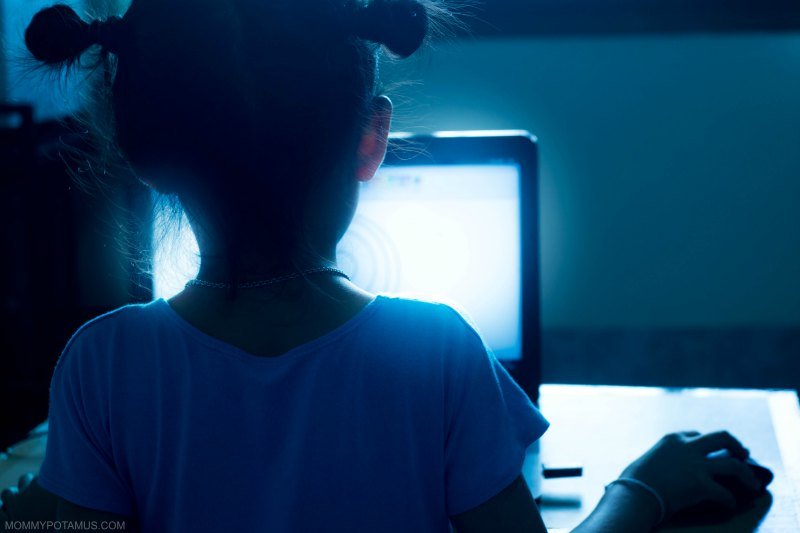
1. Kids Are More Vulnerable To The Effects of Blue Light
With their brains, sleep patterns and even eyes still developing, children and adolescents are particularly vulnerable to the sleep-disrupting effects of screen time, according to a sweeping review of the literature published today in the journal Pediatrics.” (1)
The crystalline lens of the eye – aka the part the helps us focus – is more transparent in children. It doesn’t fully develop until around age 14-15, and children’s eyes have larger pupils, too. (2)
For both of these reasons, children absorb more blue light than adults do when exposed to light emitting devices. (3)
2. Excessive Blue Light Can Disrupt Focus, Mood, & Energy Levels
Our circadian rhythms – which orchestrate the ebb and flow of cortisol and melatonin – are tied to light and darkness. Cortisol (which is associated with bright light) helps us get going in the morning, and melatonin (which is associated with low red light) tells our body when it’s time to wind down for bed.
Due to blue light overexposure during the day and into the night, most of us are out of sync. That’s doubly true for our kids, according to a study which found that “when adults and school-age children were exposed to the same amount and intensity of light, the children’s melatonin levels fell twice as much.” (1)
Translation: Blue light makes kids less sleepy at bedtime, which has a cascading effect on:
Fatigue Levels – In addition to reducing the total time, blue light exposure increases the number of times we wake up throughout the night, resulting in less restorative sleep and more fatigue the next day. (4)
Focus & Attention – According to this New York Times article, “sleep experts note that children who lose as little as half an hour of needed sleep per night — whether because of a sleep disorder or just staying up too late texting or playing video games — can exhibit behaviors typical of ADHD.
Mood – “There are both direct and indirect connections between light and mood. When one of our three types of photoreceptors, ipRGCs, directly respond to light, their projections reach certain brain regions that affect emotion. (Think, does a sunny day make you feel happy?) However, it is the indirect connection to certain systems that, when disrupted, are believed to contribute to mood disorders.” (5)
3. Light Blocking Apps May Not Be Effective
As awareness about excessive blue light exposure rises, many people have begun using “Night Shift” mode or downloadable apps that change the hue of smartphone, computer and iPad screens at night.
While I think some of them might be effective, a 2018 study found that participants using Apple’s “Night Shift” mode still experienced a significant underproduction of melatonin at night. They tested the mode in both the “less warm” and “more warm” settings and did not find a significant difference between the two.
4. Overexposure To Blue Light May Affect Eye Health
There’s not a consensus among experts about whether blue light exposure from devices can cause short-term effects like eye strain, or more serious issues like macular degeneration. Many opthamologists say that it doesn’t cause any long-term issues or even strain the eyes. On the other hand, research is exploring whether it might cause macular degeneration, and people who start using blue light blocking glasses report a reduction in eye strain.
Personally, I’ve found that my eyes feel more relaxed while wearing blue blocking computer glasses when I write articles, so I’m going to continue to use them.
The Best Blue Light Blocking Glasses for Kids
Now that we’ve got all that covered, the last thing you need to know is that there’s a difference between daytime blue light glasses and nighttime ones.
The daytime ones block less blue light, which is good because you want to get some throughout the day. Also, they’re usually clear or lightly tinted, which allows for a more “true color” experience. However, at night even a little blue light will inhibit melatonin, so you’ll want glasses that block around 99%. Below I’ve included affordable options for both types depending on your family’s needs.
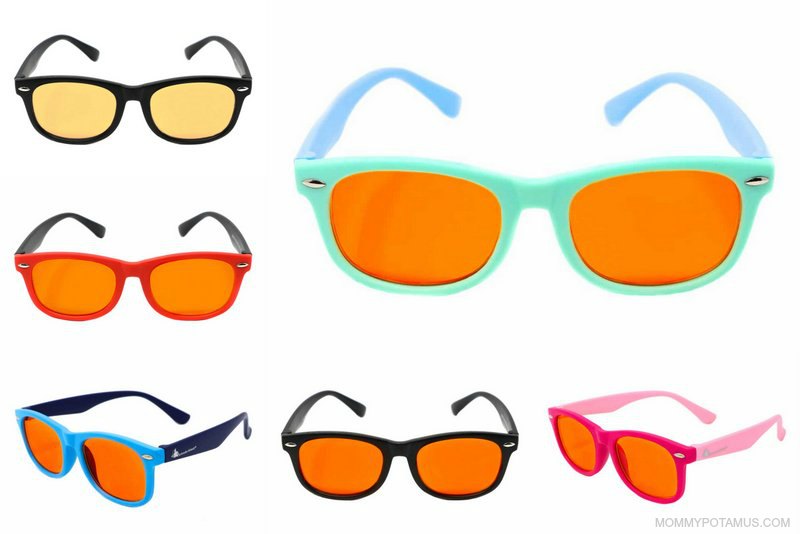
DefenderShield Blue Light Glasses for Kids
These durable frames are made with comfy, bendable silicone sides (by the ears) and lightweight, shatterproof lenses. They’re cute and affordable and come in two lens options – yellow tint/amber lenses that filter 50% of blue light and orange lenses that filter 99% of blue light (450-490 nanometer wavelength for both).
Right now the amber lenses only come with black frames, but due to the popularity of the colored frames Defendershield is planning to offer those soon.
Price: $29.99 (Save 10% with code MP10)
Age Range: 3-12 years old
Clear or Amber Daytime Lens Option: Yes
Orange Nighttime Lens Option: Yes
Amount of blue light filtered: 50-99% depending on lens
Frame Color Options: Black, Blue/Navy, Pink/Magenta, Aquamarine/Sky Blue, Red/Black
Prescription Glasses Option: No
Click here to shop DefenderShield and use code MP10 at checkout to save 10%
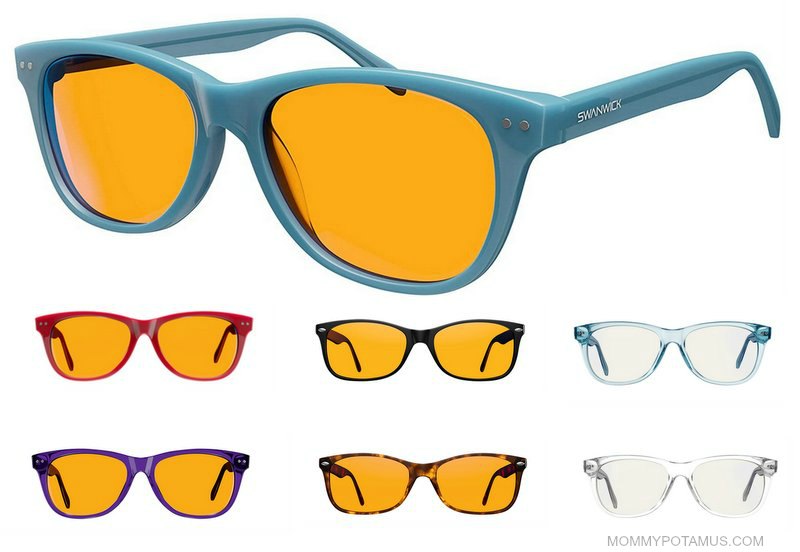
Night Swannies Blue Light Blocking Glasses
Night Swannies Kids nighttime glasses block close to 100% of blue light between 400-500nm. Their Day Swannies block between 42-80% of blue light between 400-450 nanometers, which is considered the most harmful part of the blue light spectrum.
They also block between 22-42% of blue light between 450-500 nanometers, which allows the part of the blue light spectrum considered beneficial to your health during the daylight hours to get through, while still protecting your eyes from overexposure. All Swannies Glasses also block 100% of UV light.
Price: $39
Age Range: Up to 8 years old
Clear or Amber Daytime Lens Option: Yes (currently sold out, though)
Orange Nighttime Lens Option: Yes
Amount of blue light filtered: Close to 100% of blue light between 400-500nm
Frame Color Options: Blue, Purple, Red, Black, Tortoise Shell
Prescription Glasses Option: No
Click here to shop Night Swannies for Kids
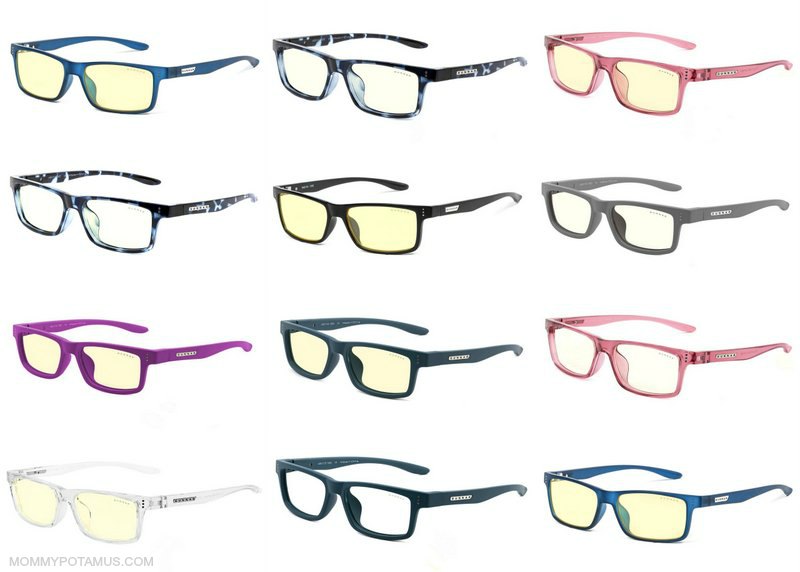
Gunnar Optiks Kids Blue Light Blocking Glasses
Gunnar Optiks offers two daytime lens options that block the peak of the Blue Light spectrum (450nm) – the clear lenses block 35% and the light amber lenses block 65%.
The two smaller sizes come with a zip-around case and carrying clip, making them ideal for backpacks and general travel. Gunnar doesn’t offer an orange lens that is best for nighttime use.
Price: $29.99 – $39.00 (More for prescription glasses)
Three Sizes Available: Cruz Kids Small (Age 4-8), Cruz Kids Large (Age 8-12), and Cruz (Age 12+)
Clear or Amber Daytime Lens Option: Yes
Orange Nighttime Lens Option: No
Amount of blue light filtered: 35% for clear and 65% for amber
Frame Color Options: Depends on size
Prescription Glasses Option: Yes
Cruz Kids Small (More colors here)
Does your little one need extra help getting a good night’s sleep?
Here are twelve research-backed sleep tips that are easy to implement.
Have a question about blue blockers? Please leave it in the comments below!
1. University of Colorado Boulder (2017) Kids uniquely vulnerable to sleep disruption from electronics
2. Turner, PL and Mainster, M.A. (2008) Circadian photoreception: ageing and the eye’s important role in systemic health
3. Behar-Cohen, F et. al. (2011) Light-emitting diodes (LED) for domestic lighting: any risks for the eye?
4. Science Daily (2017) Blue Light Emitted By Screens Damages Our Sleep, Study Suggests
5. Mental Health America. How Blue Light Affects Mental Health


